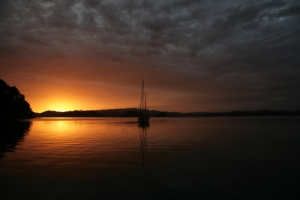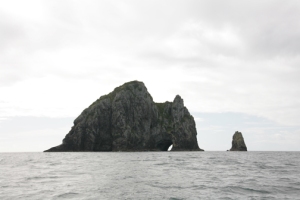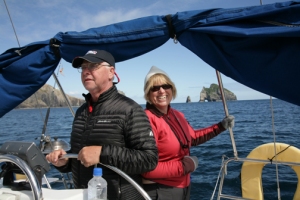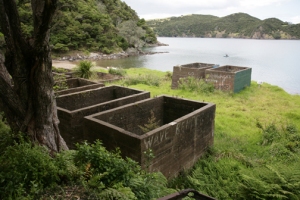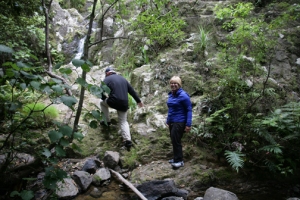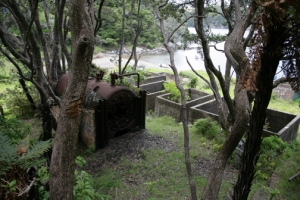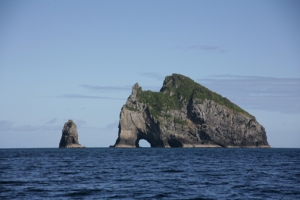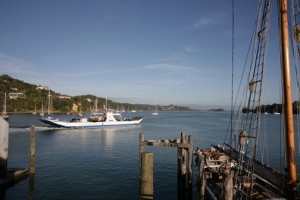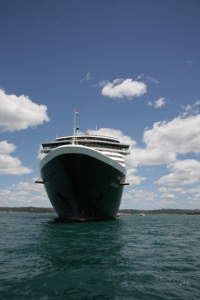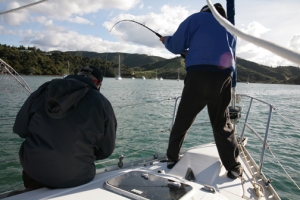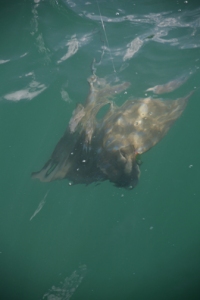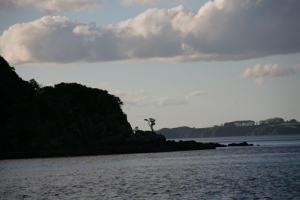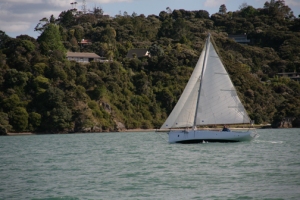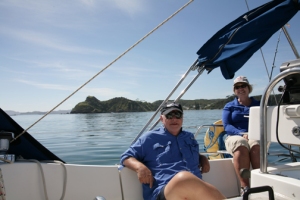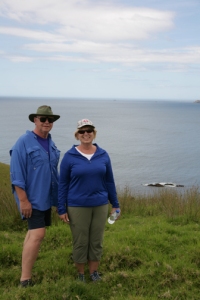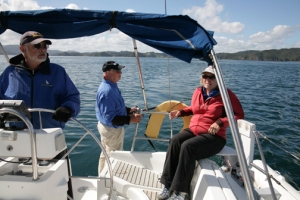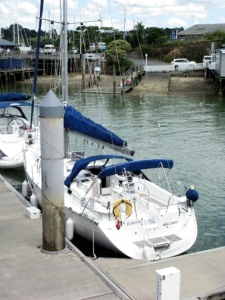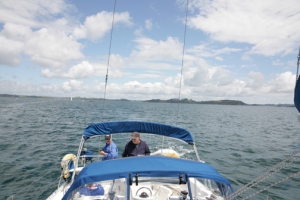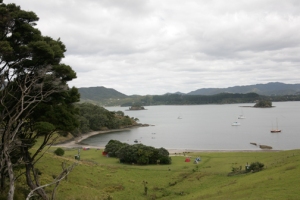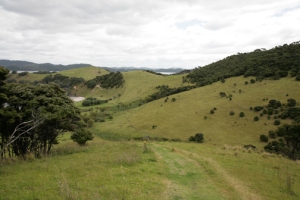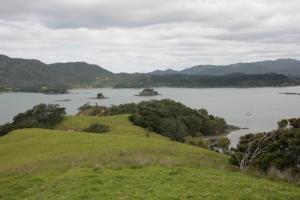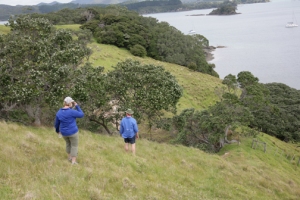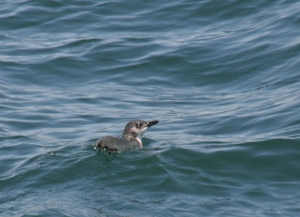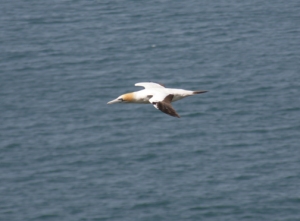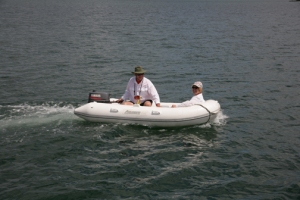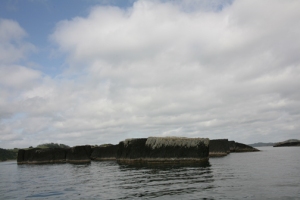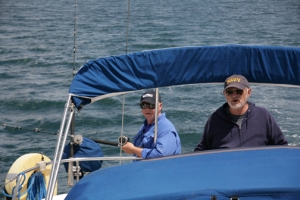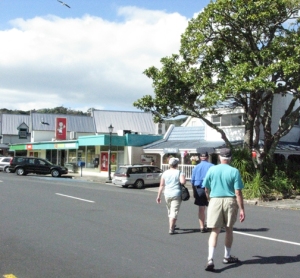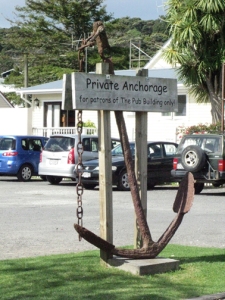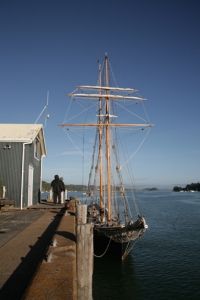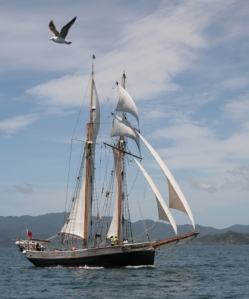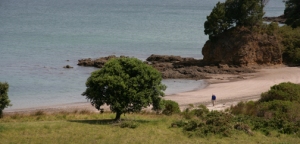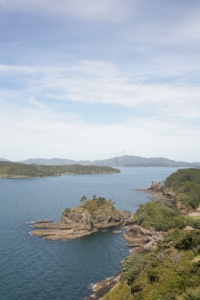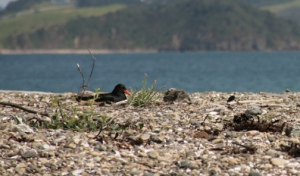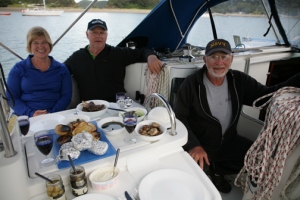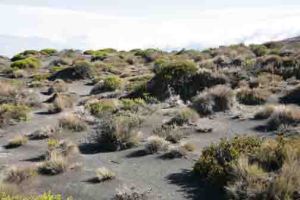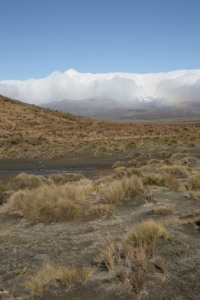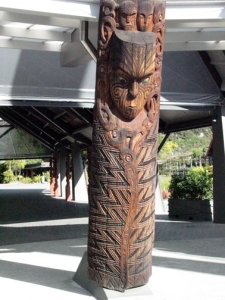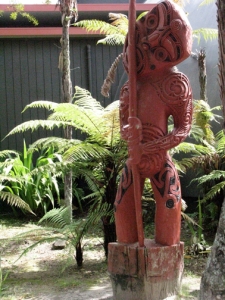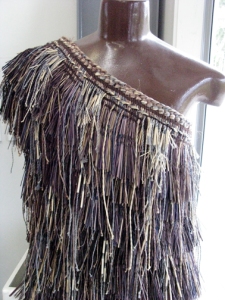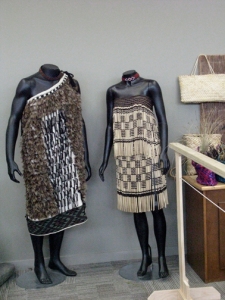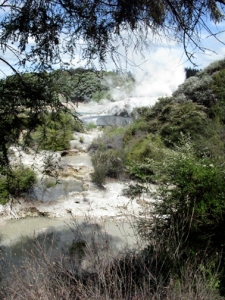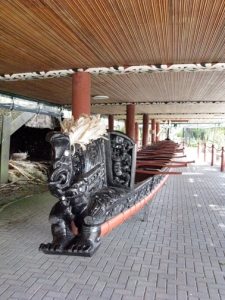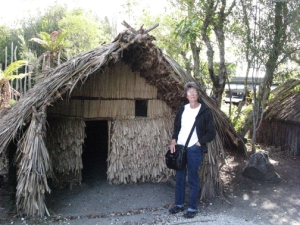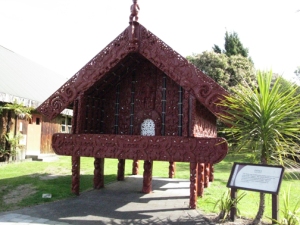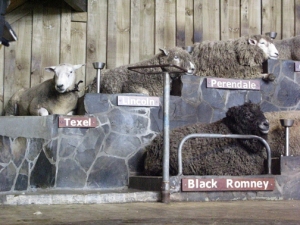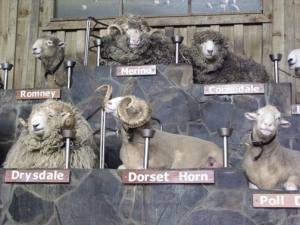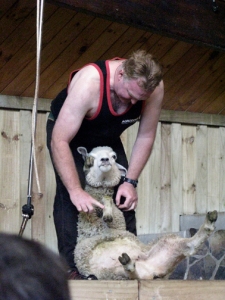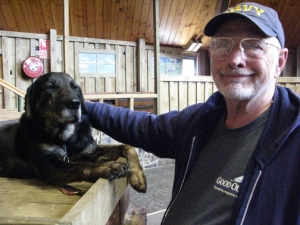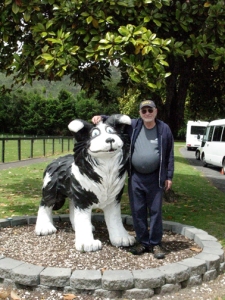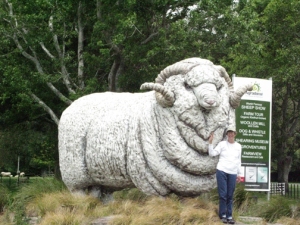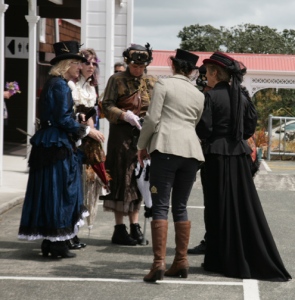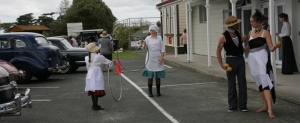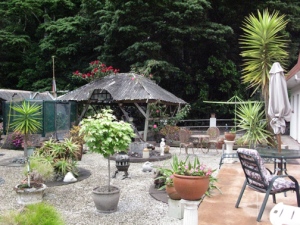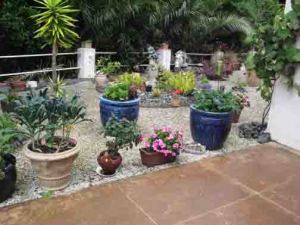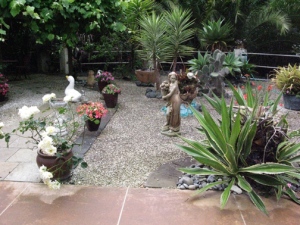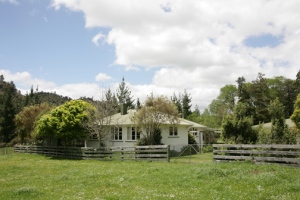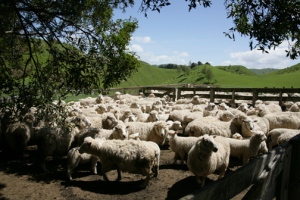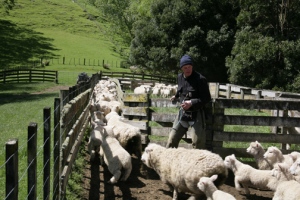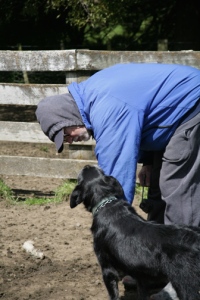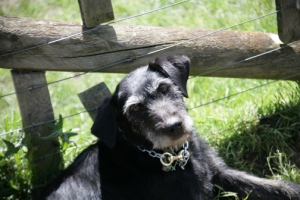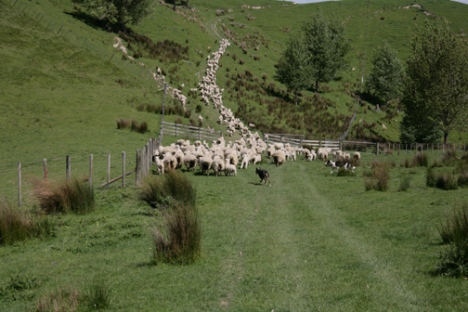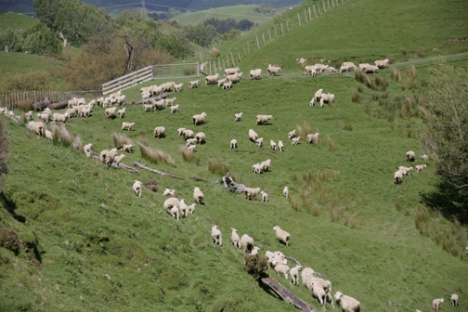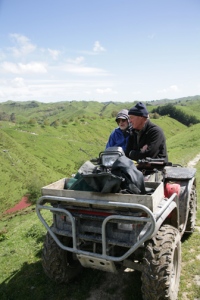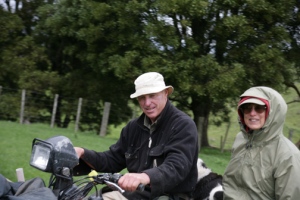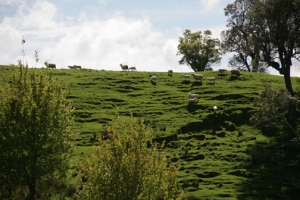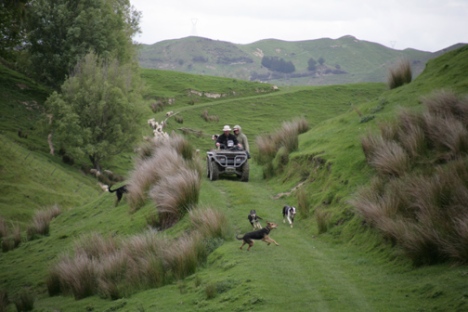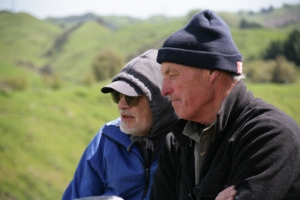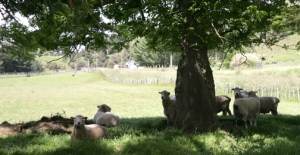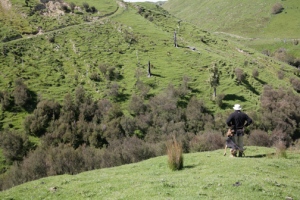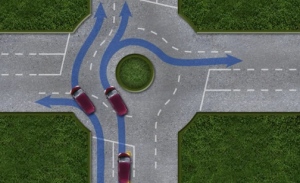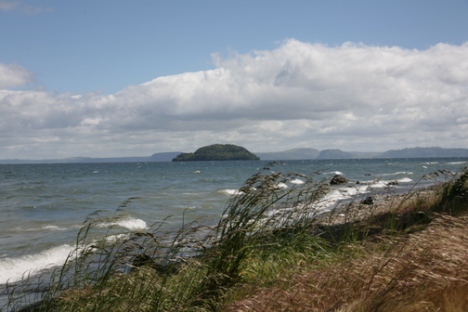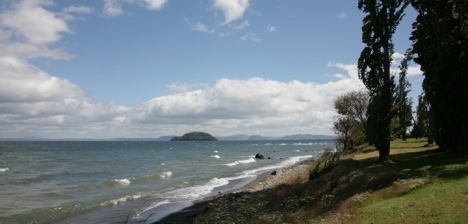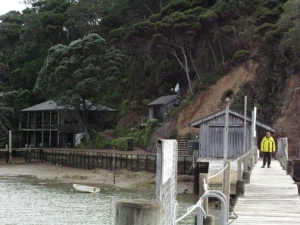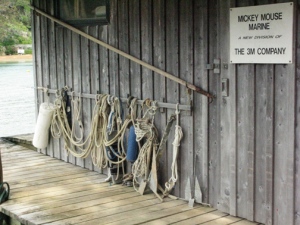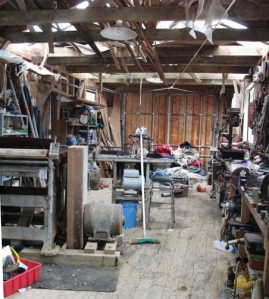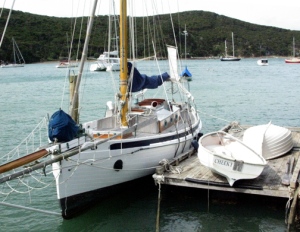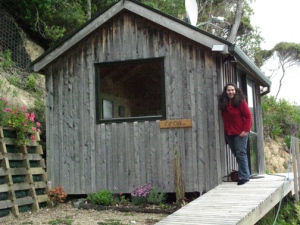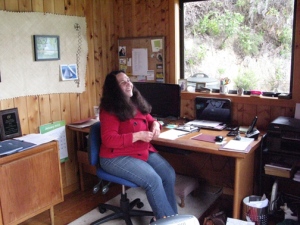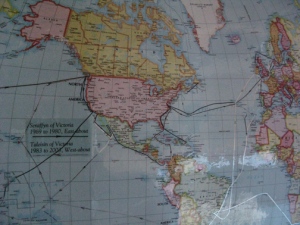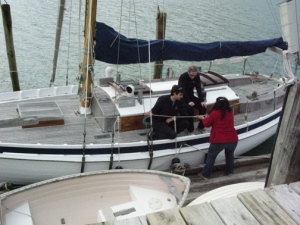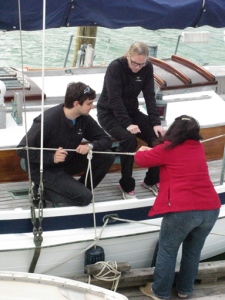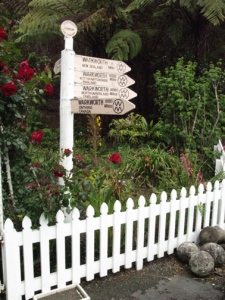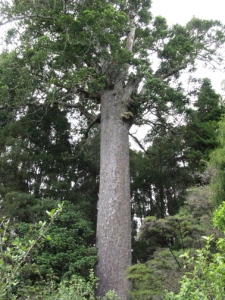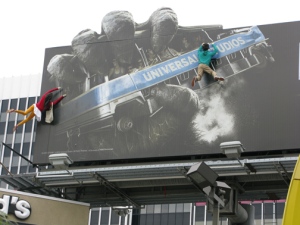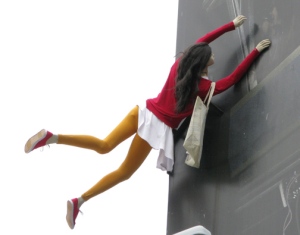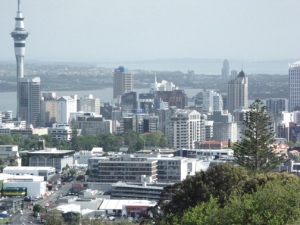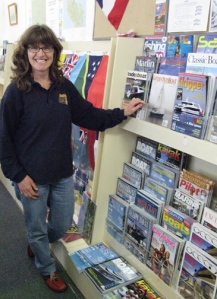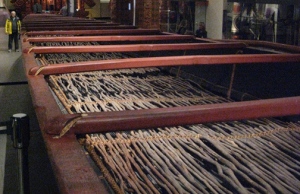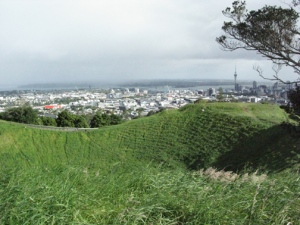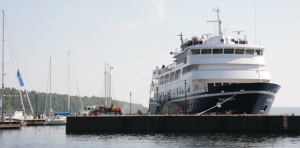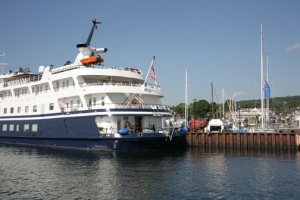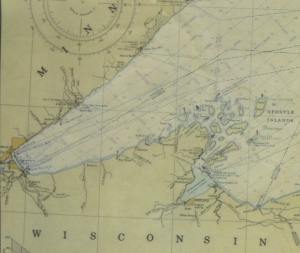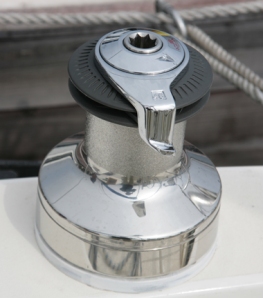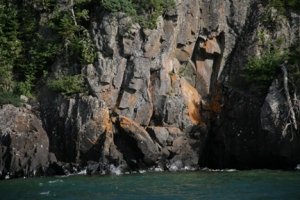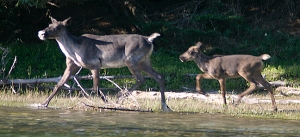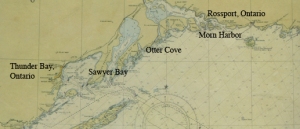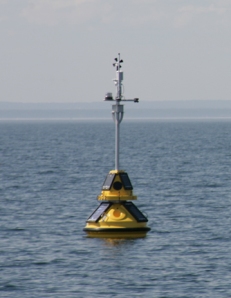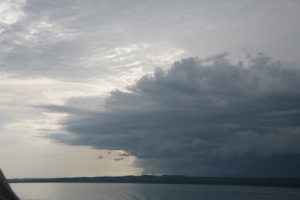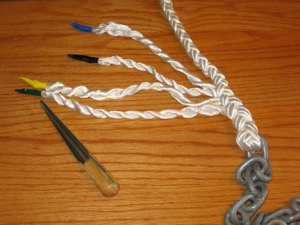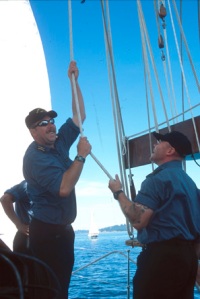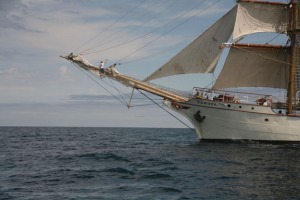Friday, November 28 — We awoke to a nice sunrise on this morning. As we were still at Roberton Island, Chuck went back up the hill to the outlook for sunrise photos. A gentle rain began just as he was returning to the boat. Since it was so early, he hated to use the dinghy motor and discovered that the dinghy (at least for one) is easier to row than to motor. That opinion changed later when he tried to row three of us.
After breakfast we headed for Oke Bay, a storm hole of our choosing providing good shelter from the west. The weather prediction was for 25 knots from the southwest. We spent a rainy day there with naps, a book, and checkers. Mavis and I learned that we don’t remember how to play checkers. I learned that I’m particularly bad at it. This was the only anchorage during our entire charter where Boheme was the only boat. Although we were seldom alone, anchorages were never crowded.
Saturday, November 29 — Jerry discovered bioluminescence in the water at 0400 and got everyone up to see it. We went out on the swim platform and ran the dinghy painter and the boathook through the water. That was a highlight for me. I have always wanted to see this phenomenon. Jerry had discovered that we were swimming in a sea of bioluminescence when he flushed the toilet early that morning and the toilet bowl filled up with what we later referred to as “sparkles.” We had bioluminescence the following day as well when we were out beyond Cape Brett but we did not see it in the closer areas of the Bay of Islands. I thought the bioluminescence was a blue-green in color. Two of our gang thought it was white. And one thought it was multi-colored. It must be “all in the eye of the beholder.”
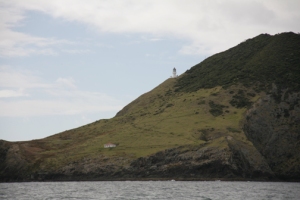
Cape Brett Lighthouse well up the hill from the keeper’s house would have made any lighthouse keeper a very healthy person!
This was going to be our “whale day.” We had had good luck with dolphins and many wonderful birds. The bioluminescence had been an unexpected bonus. Surely we could spot whales too?
After breakfast we headed for Cape Brett and the hole in the rock on Piercy Island (aka Motukokako Island). We turned the corner and were anchored in Whangamumu Harbor by lunchtime. Although we were alert for them, we saw no whales along the way.
A dinghy ride to the beach followed. This anchorage was once a very busy whaling station. The remains of buildings and a short set of rails used for hauling large whales out of the water are still there to see along with a fading explanation of what’s what. We thought it was charming that, although the attitude about whaling has changed, no attempt was made to make this a “teaching moment” beyond offering the information about what happened here. The same thing was true of the Kauri Museum which explained how those magnificent trees had been logged and why they were important to the people of the time. Times have changed and yet there was no need to preach or lay a guilt trip on the current generations.
Our trip to Whangamumu included a couple of trails, one to a waterfall and the other to a lookout. A playful pair of dolphins seem to “own” this bay and were there to greet us when we arrived. We figured that having local dolphins is almost as cool as seeing whales.
Sunday, November 30 — We were up early and off on our next exciting adventure. We thought it was going to blow 20 knots from the southwest later in the day and wanted to make a dinghy landing on the west-facing shore by Russell for a few more groceries. Oh, and wine. We had a great time sampling New Zealand wines. Jerry was particularly fond of Huntaway brand wine, in honor of the working dogs (Bess in particular) on our farm stay.
We headed back up the shore to Cape Brett and were just as inspired by the hole in the rock and elephant (or was it a wooly mammoth or a tortoise?) from this angle. On the way we passed through a flock of shearwaters (I think they were shearwaters) grouped together on the water. They took off at once – perhaps as many as 400 – in a dazzling display that was over all too soon. Since we wanted to make an “amphibious landing” at Russell while the wind was light, we motored all the way arriving around 0900. Chuck and Mavis went ashore and came back with groceries and wine enough for three more days. We were already counting the final days of our charter. How did the time go by so quickly? We would have to turn Boheme in on Wednesday by noon.
Once we had enough to keep body and soul nourished for a few more days — and most importantly real “formerly live” bait (frozen fish and squid) for our fisherman — we headed to Black Rocks for yet another round of fishing. The wind built throughout the day with periods of gusty and unsettled weather. We drifted downwind from there toward Roberton Island where we’d seen some incredible fishing a few days earlier. We were referring to that spot as Red’s Reef. Still no luck.
Anticipating stronger wind and from the southwest the following morning, we sailed to Parekura Bay, a bay so large it contains three smaller bays. We put the hook down in Waipiro Bay and swung on the hook while shots of wind blew down the surrounding hills like williwaws and whistled in the rigging.

Jerry at the helm. Just like in the Apostles, we had plenty of “cool” weather in the Bay of Islands.
New Zealand’s busy summer season was just beginning. There were many fishing and excursion boats operating. The R Tucker Thompson took a group out and flew all their sails every day, making for any number of photographic moments. Occasionally we’d see powerboats towing parasailors. Then three of the largest cruise ships we’d ever seen showed up. In addition to all this, there were the usual ferries for cars and others just for passengers operating between Russell and Opua and Paihia. It was a busy place. I can’t imagine how much busier it might be when peak season arrives. All the boats on moorings that were not out and sailing while we were there give us a clue about the peak boating population.
The little town of Opua is a New Zealand customs and entry port for cruisers arriving from all over the Pacific. We were aware of the cruiser community, but they’re not located near the wharf where Fairwinds Charters operates. Other than one trip back to Opua early in the week, we were out in the islands and didn’t have an opportunity to meet anyone from the cruising community.
This day’s fishing report was a bit more stimulating than the previous ones. Jerry got a ray on the line and it gave him quite a fight from the stern to the bow of the boat. Chuck took over and was very excited by what might be on the line. Once they figured out that they’d snagged a ray, they cut it loose. It provided a good afternoon’s entertainment and woke up a bunch of sleepy, sunburned sailors.
Monday, December 1 — It was cold this morning and blowing 15 from the southwest and predicted to trend toward the south. We had enough early morning wind to sail off the anchor (although you don’t get any “style points” for that since you first have to run the engine in order to run the anchor windlass and raise the anchor). We put up the main and jib and headed up the inlet to Kerikeri on a sightseeing mission. We read in the cruising guide that the sailing club had a restaurant. Having a lunch that we did not make ourselves sounded like a nice change but when I phoned to ask whether they served lunch, we learned that the restaurant was open on Friday nights only until the summer season gets underway in full force.
Next we thought we might find whales and headed for deeper water but were disappointed once more in that pursuit. The lesson here is that the things you find are those you do not seek (gannets, blue penguins, bioluminescence, and dolphins come to mind) but those you seek, such as fish for dinner or an exciting whale sighting, remain elusive. We have been very contented with all the new creatures we have seen. No complaints. All good, as they say in New Zealand.
On this day the weather was gusty and volatile with winds primarily from the southwest. We thought Army Bay (aka Waiwhapuku Bay) on Moturua Island might be a good anchorage but looked it over and turned away for Manawaora Bay. I was particularly taken with the gnarly tree there at the point and named it “the witch tree” after a similar one on Lake Superior. There are many great species of trees that I was unable to identify in New Zealand. At least I could identify some of the remaining kauri trees and the many magnificent Norfolk Island Pines.
Tuesday, December 2 — This was to be our last full day aboard. Time spent sailing goes by quickly. The morning temperature was brisk once again but it warmed up with the sun. If we were troubled by the weather at all, we had only to remember how things were going weatherwise at home in Minneapolis. We headed out once more to look for whales with similar results. (See above for philosophy about the elusive quality of things one seeks.)
We sailed all day in a variety of conditions with a full or reefed mainsail. We had what we think was a Northern Giant Petrel land in our wake, however. This is a large brown bird about the size of a goose. And we had one last farewell sighting of the porpoises. It seemed as if they were saying goodbye.
As we headed back toward town, we passed close by two big cruise ships anchored between Russell and Paihia. They were launching small motorboats to ferry passengers here or there on various missions. By way of contrast, not long after, we watched a wooden boat being expertly soloed and had a few words with her skipper. He was in Russell for a wooden boat regatta that was coming up on the weekend. His boat was about 100 years old. He said he’d spent four years restoring her.
By the time we were watching him sail her singlehanded out of the mooring and back, we were anchored near Russell almost exactly where we had spent our first night. It seemed fitting. Chuck and Mavis, who were not sailors when we began, were by this time talking like sailors. They knew what the parts of the boat were called and how they functioned. They knew how the unusual marine systems on the boat worked. We all had become comfortable with this boat and this cruising ground.
The Bay of Islands is, in many ways, like the Apostle Islands of home. It was a great choice of a cruising ground. There are several chartering choices in New Zealand. This was the perfect one for the four of us. We’d had a good cruise and were sorry to see it end.
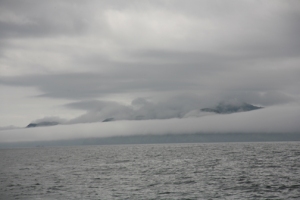
Like our home cruising ground, they even had fog in the Bay of Islands, although we were told fog never happens here.
Wednesday, December 3 — The cruise did end a bit abruptly the following morning. We had switched out the propane tank the night before when it ran out while we were cooking dinner. But the spare tank was running on fumes. There was nothing left in the morning for coffee. There’s a song about “No coffee!” and we could have sung it that morning (even the two of us who are tea drinkers).
We headed back to the Opua wharf a bit earlier than planned in order to have a “proper breakfast” at the Marina Cafe. They hadn’t exactly open yet. The cook had not arrived. But coffee and tea were available on the spot. Life is good. Breakfast was terrific too.
We went through the motions of cleaning and emptying the boat. Check every cubbie! We discovered a couple of things we’d misplaced and had not been able to locate throughout the entire charter. Jerry and Kim of Fairwinds Charters went through the final paperwork . . . and it was time to go.
Chuck and Mavis, who had been acquaintances to begin with, were now lifelong friends. How many friends or relatives would you be willing to spend 10 days with in a small space while facing unfamiliar systems, anchorages, and occasional bits of lousy weather? Our own list is short. Perhaps Jerry and I needed T-shirts: “I survived 10 days on a small yacht with my accountant and his wife.” Chuck and Mavis could have a similar set of shirts made up proclaiming that they had allowed a couple of mere clients — people Chuck normally sees once a year — to make a bareboat charter possible for him. We said good-bye several times. It was hard to let go. Chuck and Mavis had to get back to Auckland and would fly out on the 4th.
Jerry and I had one more day to play in New Zealand. We drove first to the nearby town of Kawakawa, well known for its baroque public toilets. You read that correctly. I could not bring myself to take photos of a bathroom, but here’s a link that helps: http://www.teara.govt.nz/en/photograph/7817/kawakawa-public-toilets. The toilets, and apparently other buildings and spaces too, were designed by an Austrian emigrant named Frederick Hundertwasser. We walked the main street and noticed a number of bizarre architectural examples.
Then we drove west across the peninsula to Opononi to see the Tasman Sea and the very impressive dunes it has built there. From there it was south on the Twin Coast Discovery Highway to see New Zealand’s greatest giant old kauri tree, Tane Mahuta, in the Waipoua Forest with a stop along the way at Baylys Beach. We enjoyed the Waipoua Forest and also the wonderful rolling hills south of there studded with dairy farms.
We were charmed when a couple of farmers on four-wheelers accompanied by a dog or two maneuvered a full herd of cows across the road for their afternoon milking. Slowly winding our way toward the airport that would send us home, we stopped for the night along the way in Dargaville.
Thursday, December 4 — We landed on this last day at the Surrey Hotel, that was to be our launching pad for our trip to the airport. We had to organize our suitcases back to the proper loads since we could have two carry-ons of only 15 pounds (and these cases weigh 5 pounds empty) and the two large duffels with everything else, essentially one full of clean clothes and one full of dirty clothes.
I walked the streets looking at the shops and available restaurants, but our energy was sapped. We ate at the Surry Hotel and turned in for our last good sleep before another very long flight.
Friday, December 5 — The sigh of relief when we turned in the rental car with nary a scratch on it should have been heard around the world. It certainly took a load off our shoulders.
This day was the longest of our lives because (thanks to the international date line) there were two Friday, December 5ths and both were spent in airports and in airplanes. Our seats on the New Zealand Air plane on the home-bound flight were much smaller and even more cramped than those on the out-bound flight. But the flights were on time even though the long wait between flights in LAX was maddening.
We arrived home at 11 p.m. and took a taxi to friend Pat Morris’ home. Pat kept our car for us so we wouldn’t have to pay airport parking prices for a month. We got our car and got lost on the highways of Minneapolis, due to construction detours. Unfortunately our faithful GPS was stored somewhere in the luggage in the trunk. Once we sorted all that out and stopped at a grocery store so we’d have something to eat in the morning, it was 3 a.m. the following day. It was no longer the Friday from hell. Know what? We weren’t tired!
We spent another hour or so with a glass of wine or scotch in hand and talked about the many experiences we’d had. We’ll be talking about the best parts of the trip for years to come.
Filed under: Sailing and traveling in New Zealand, Uncategorized | Tagged: Army Bay, Bay of Islands, Baylys Beach, bioluminescence, Black Rocks, Cape Brett, catching a ray, dolphins, elephant, gnarly witch tree, Hole in the Rock, kauri tree, Kerikeri, large cruise ships, local cruising community, Mastodon, Motukokako Island, Moturua Island, New Zealand customs port, New Zealand wines, Northern Giant Petrel, Oke Bay, Opononi, Opua, Paihia, Parekura Bay, Piercy Island, Roberton Island, Russell, sand dunes, shearwaters, sunrise photos, Tane Mahouta, Tasman Sea, tortoise, Waipiro Bay, Waipoua Forest, Waiwhapuku Bay, whales, whaling station remains, Whangamumu Harbor, Wooly Mammoth | 1 Comment »


